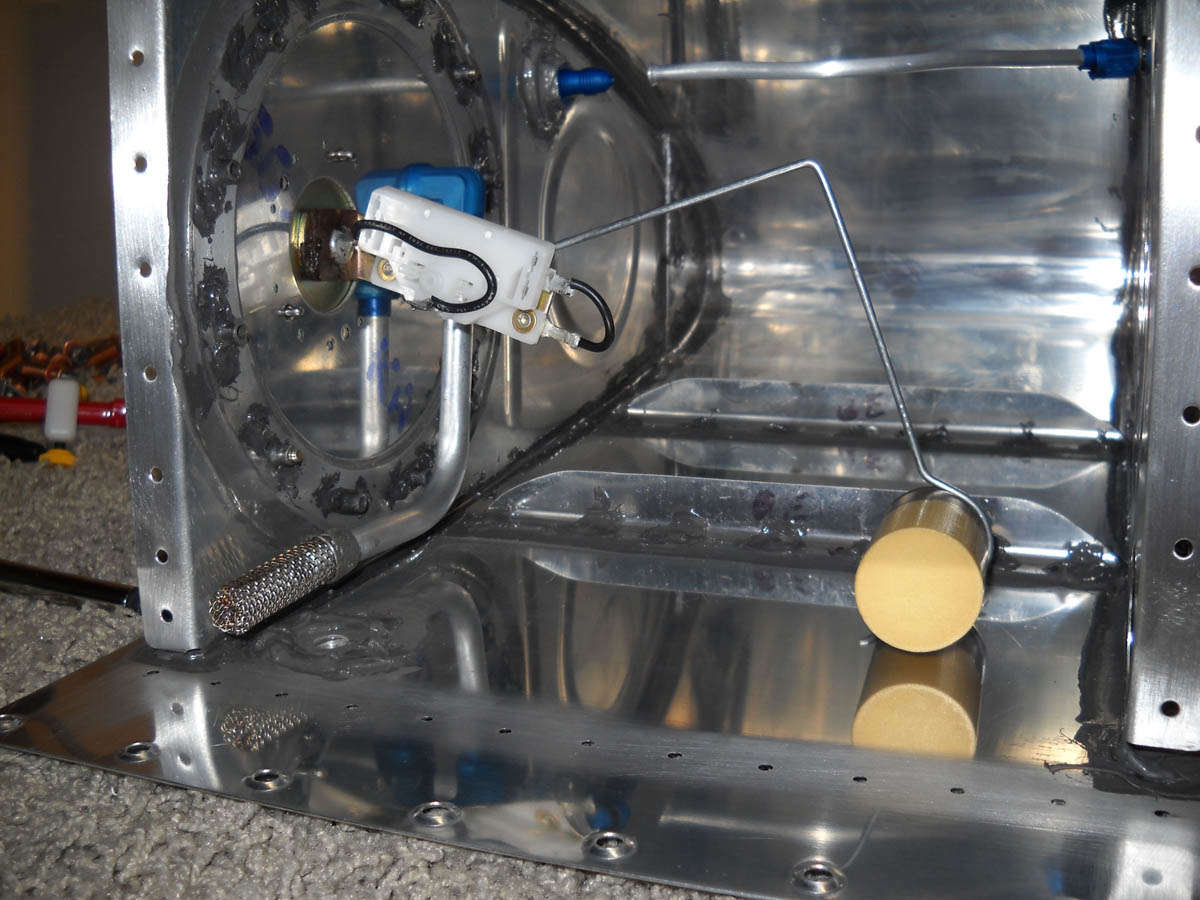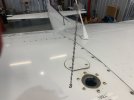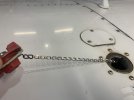One of the 172s at my flying club has had a fuel chain come loose from the cap. I assume it is still connected on the inside of the tank, and the aircraft has flown 3 or 4 times since the squawk. Is this issue something that would ground you guys?
You are using an out of date browser. It may not display this or other websites correctly.
You should upgrade or use an alternative browser.
You should upgrade or use an alternative browser.
Fuel cap chain loose inside tank - a flight cancelling issue?
- Thread starter Luna
- Start date
ateamer
Pattern Altitude
Are you comfortable flying with a loose object inside a fuel tank? And are you comfortable with an NTSB report stating that as the cause of power loss and a subsequent mishap?
Why don’t they retrieve it?
Definitely not comfortable with being another news report or statistic. I’ve been leaning heavily towards calling it a no-go scenario if it doesn’t get fixed by the flight. Getting additional confirmation that I’m not being overly cautious is nice.
As for maintenance fixing it, they’ve historically been a bit slower to respond to squawks, so I’m not hopeful that they will get to it in time. Oh well - responsible, safety-first decisions are a part of what we do.
As for maintenance fixing it, they’ve historically been a bit slower to respond to squawks, so I’m not hopeful that they will get to it in time. Oh well - responsible, safety-first decisions are a part of what we do.
ateamer
Pattern Altitude
You can look at it this way: Unless you need to be airborne right now to save your own life, there is no such thing as a mandatory flight.
- Joined
- Dec 5, 2010
- Messages
- 5,500
- Display Name
Display name:
GeorgeC
Get up on a ladder and look.I assume it is still connected on the inside of the tank
Isolating the question to simply "Is a chain in the tank a safety of flight issue?", personally I'd say no. The bigger question is probably "If they don't fix this, what else are they not fixing?" But, frankly, that is a question you're never going to be happy with the answer to if you aren't the owner / operator.
Oh I will come flight time - I learned about this via a squawk on the scheduling software. Always, always thorough on the preflight - no exceptions.Get up on a ladder and look.
Based on that squawk, I'm picturing a chain still attached to the neck, but no longer attached to the cap.
or it could be attached to the cap and no longer attached to the neck. Either way, not exactly loose in the tank.
it would be a down for me if it was loose from the neck AND loose for the cap....ie the chain laying in the bottom of the tank ready to get 'pulled' into the fuel lines....
not so sure if it's still attached on either end....but I would think about it!
or it could be attached to the cap and no longer attached to the neck. Either way, not exactly loose in the tank.
it would be a down for me if it was loose from the neck AND loose for the cap....ie the chain laying in the bottom of the tank ready to get 'pulled' into the fuel lines....
not so sure if it's still attached on either end....but I would think about it!
I believe it is still attached to the neck and only came loose from the cap, but I haven't made visual confirmation myself yet. My flight isn't until this coming Saturday, so there is time to be a squeaky wheel about it to the mechanics/management.
well, yeah...that's just it. Knowing of course that the fuel pick-up is very likely NOT on the bottom of the tank or at least shouldn't be... but in any of the rental aircraft I've ever flown I don't know how far off the bottom it is. I'm not familiar enough to know what that fuel line outlet fitting on the tank looks like or how big it is, relative to the diameter of the little chan links, etc... so taht's why I said if it was loose and laying on the bottom I wouldn't fly it till I at least talked to an A&PIf a chain can be pulled into your fuel lines you have bigger problems.
There’s a strainer that’s much smaller than a chain. If there wasn’t there’d be a lot more fuel starvationwell, yeah...that's just it. Knowing of course that the fuel pick-up is very likely NOT on the bottom of the tank or at least shouldn't be... but in any of the rental aircraft I've ever flown I don't know how far off the bottom it is. I'm not familiar enough to know what that fuel line outlet fitting on the tank looks like or how big it is, relative to the diameter of the little chan links, etc... so taht's why I said if it was loose and laying on the bottom I wouldn't fly it till I at least talked to an A&P
Timbeck2
Final Approach
How would you know if the part dangling inside the fuel tank is ALL the chain? What about the part that attaches to the fuel cap? Obviously some part of it broke - but the question is, did it break off?
Dan Thomas
Touchdown! Greaser!
- Joined
- Jun 16, 2008
- Messages
- 11,360
- Display Name
Display name:
Dan Thomas
Except that it's a stainless steel chain, and stainless is, at best, weakly magnetic. Many stainless alloys are totally non-magnetic.It should be pretty easy to:
* See if the chain is still attached to the filler neck* Fish it out with a magnet
There is a finger strainer at the fuel outlet. The chain won't get through it, and won't block the strainer.it would be a down for me if it was loose from the neck AND loose for the cap....ie the chain laying in the bottom of the tank ready to get 'pulled' into the fuel lines....
If a link or the end-ring has fallen off, it will migrate, via vibration and sloshing fuel, to the sump drain. There is a possibility that certain drain valves might get fouled and stuck open with that link. Other types are immune to that.
If it is like my 172 the chain has a S hook on the end that comes off if the S hook is not bent closed all the way. Mine is loose and I put it back frequently with my fingers. One of these days I will remember to use a needle nosed pliers to close down the S hook. Only been doing it for 6 years and 1400 hours.
The chain is pretty handy as my hangar neighbor with a 182 flew 200 miles with the cap dangling by the chain and wasted a bunch of fuel. His wife mentioned she could smell gas and she was right. The chain saved him a fuel cap.
The chain is pretty handy as my hangar neighbor with a 182 flew 200 miles with the cap dangling by the chain and wasted a bunch of fuel. His wife mentioned she could smell gas and she was right. The chain saved him a fuel cap.
Last edited:
Lindberg
Final Approach
You're going to be a squeaky wheel about a squawk you read on the internet about a plane you're not even going to fly until a week from now?I believe it is still attached to the neck and only came loose from the cap, but I haven't made visual confirmation myself yet. My flight isn't until this coming Saturday, so there is time to be a squeaky wheel about it to the mechanics/management.
Mtns2Skies
Final Approach
- Joined
- Jul 12, 2008
- Messages
- 5,631
- Display Name
Display name:
Mtns2Skies
Rather than asking the question of "should I ground myself for this" I'd recommend you learn more about your fuel system and learn the "why" of your system. Go talk to your flying club A&P's and ask them WHY they would or would not be concerned about it. Systems knowledge is valuable and helps troubleshooting issues both in the air and on the ground.One of the 172s at my flying club has had a fuel chain come loose from the cap. I assume it is still connected on the inside of the tank, and the aircraft has flown 3 or 4 times since the squawk. Is this issue something that would ground you guys?
- Joined
- Apr 5, 2017
- Messages
- 3,911
- Location
- hopefully not at work
- Display Name
Display name:
Meet the Fokkers
That rusty S hook looks magnetic 
To the OP, at the very least, report it to the mx shop.
To the OP, at the very least, report it to the mx shop.
Last edited:
Count the number of links on the dangling chain and compare it to the number of links on chain in the other tank?How would you know if the part dangling inside the fuel tank is ALL the chain? What about the part that attaches to the fuel cap? Obviously some part of it broke - but the question is, did it break off?
ateamer
Pattern Altitude
That assumes that both chains were identical to start with.Count the number of links on the dangling chain and compare it to the number of links on chain in the other tank?
Dan Thomas
Touchdown! Greaser!
- Joined
- Jun 16, 2008
- Messages
- 11,360
- Display Name
Display name:
Dan Thomas
Likely nothing broke. Those S-hooks are famous for opening a bit and falling off the cap. The person fuelling can get rough and yank stuff and stretch it. The chain can get twisted, making it shorter, and so the fueller tries to pull it farther out of the way instead of unwinding it properly.
I had to reconnect those things numerous times in the flight school.
There are much more serious snags to fuss about.
I had to reconnect those things numerous times in the flight school.
There are much more serious snags to fuss about.
texasclouds
En-Route
Probably time to scrap the plane. Once those chains start falling off you never know what else is about to fail.
Lindberg
Final Approach
What about professionally piloted small airplanes?Why is it a mystery small airplanes crash more often compared to professionally piloted airplanes??
thanks for posting that.Here’s what a typical fuel pickup looks like.(bottom Left)

As a lifelong tinkerer and mechanical engineer by education, I ass-u-med there would be something like that in the tank, but I don't recall ever actually seeing one. I think this points to a disadvantage of being a renter pilot, especially one that rents different aircraft.... you hardly ever really get to learn the systems.
Dan Thomas
Touchdown! Greaser!
- Joined
- Jun 16, 2008
- Messages
- 11,360
- Display Name
Display name:
Dan Thomas
I taught an Aircraft Systems course to our flight school students. It covered the airplane in some detail.As a lifelong tinkerer and mechanical engineer by education, I ass-u-med there would be something like that in the tank, but I don't recall ever actually seeing one. I think this points to a disadvantage of being a renter pilot, especially one that rents different aircraft.... you hardly ever really get to learn the systems.
In the fuel system there is that finger strainer at the outlet in each tank. Then the fuel goes through the selector or shutoff valve and to the fuel strainer on the firewall. There's screen in there, too, that is supposed to be cleaned every 100 hours or annually. Then the fuel goes to the carb or fuel servo, where there is yet another screen that is supposed to get cleaned periodically.
Each screen is finer than the one before it. And I have found fuel strainer and carb/servo inlet screen stuff seized solid because it hasn't been apart in 25 years. Pencil-whipped annuals.
danhagan
En-Route
I assume it is still connected on the inside of the tank..
Get up on a ladder and look.
You may need more light to see it, avoid using a match
Bic lighter ok to use?You may need more light to see it, avoid using a match
Capt. Geoffrey Thorpe
Touchdown! Greaser!
- Joined
- Jun 7, 2008
- Messages
- 16,019
- Location
- DXO124009
- Display Name
Display name:
Light and Sporty Guy
True story.Bic lighter ok to use?
Used to work with an engineer that had originally been from the Soviet Union. He was having trouble starting his car, and called a buddy who had been a battery man in a Soviet submarine - an expert when it comes to battery issues - eh? The buddy said they needed to check the electrolyte level in the battery - they pop of the caps and the former battery man flicks his Bic for more light...
Injuries were minor, but the battery had to be replaced.
Back to your regularly scheduled thread, already in progress.
ateamer
Pattern Altitude
Yeah, but being Russian, he’d probably done that half a dozen times before. Each one with an explosion.True story.
Used to work with an engineer that had originally been from the Soviet Union. He was having trouble starting his car, and called a buddy who had been a battery man in a Soviet submarine - an expert when it comes to battery issues - eh? The buddy said they needed to check the electrolyte level in the battery - they pop of the caps and the former battery man flicks his Bic for more light...
Injuries were minor, but the battery had to be replaced.
Back to your regularly scheduled thread, already in progress.
I saw a bad one at the dragstrip years ago after dark. Dude used his bic the check his battery connections and it blew up. It was pretty bad, they flew him out in a helicopter.
Ed Haywood
En-Route
A great opportunity to dive in and learn the system in detail. Thanks for the info all
That's the right attitude!
GaryM
En-Route
- Joined
- Apr 16, 2020
- Messages
- 2,573
- Location
- Was KMMU, looking at KCOE
- Display Name
Display name:
Gary M
When I was a grad student, in the lab next to mine, the prof caught an org chem postdoc fresh from China filling a flask from a big can of diethyl ether. Lit cigarette in his mouth.True story.
Used to work with an engineer that had originally been from the Soviet Union. He was having trouble starting his car, and called a buddy who had been a battery man in a Soviet submarine - an expert when it comes to battery issues - eh? The buddy said they needed to check the electrolyte level in the battery - they pop of the caps and the former battery man flicks his Bic for more light...
Injuries were minor, but the battery had to be replaced.
I guess the fume hood was working well; everyone survived.


